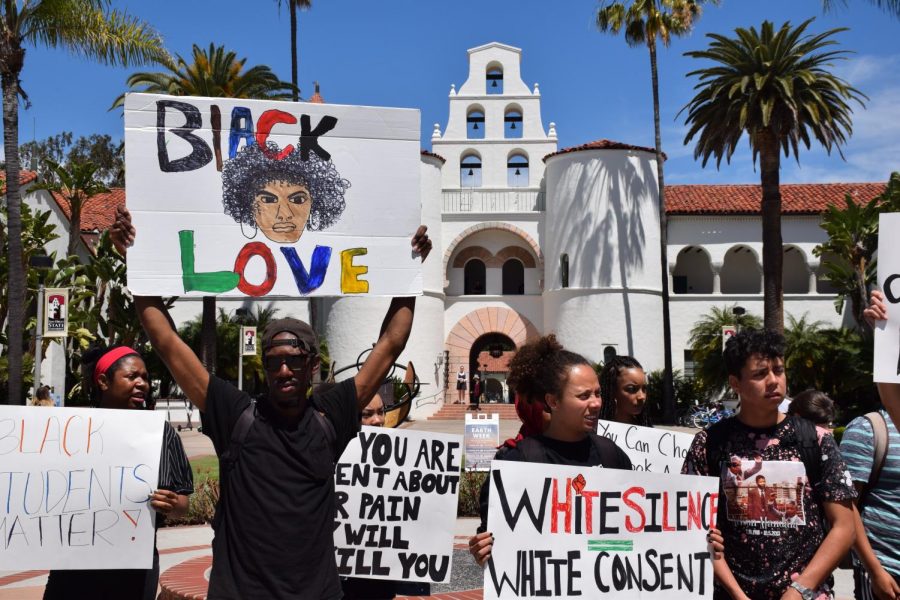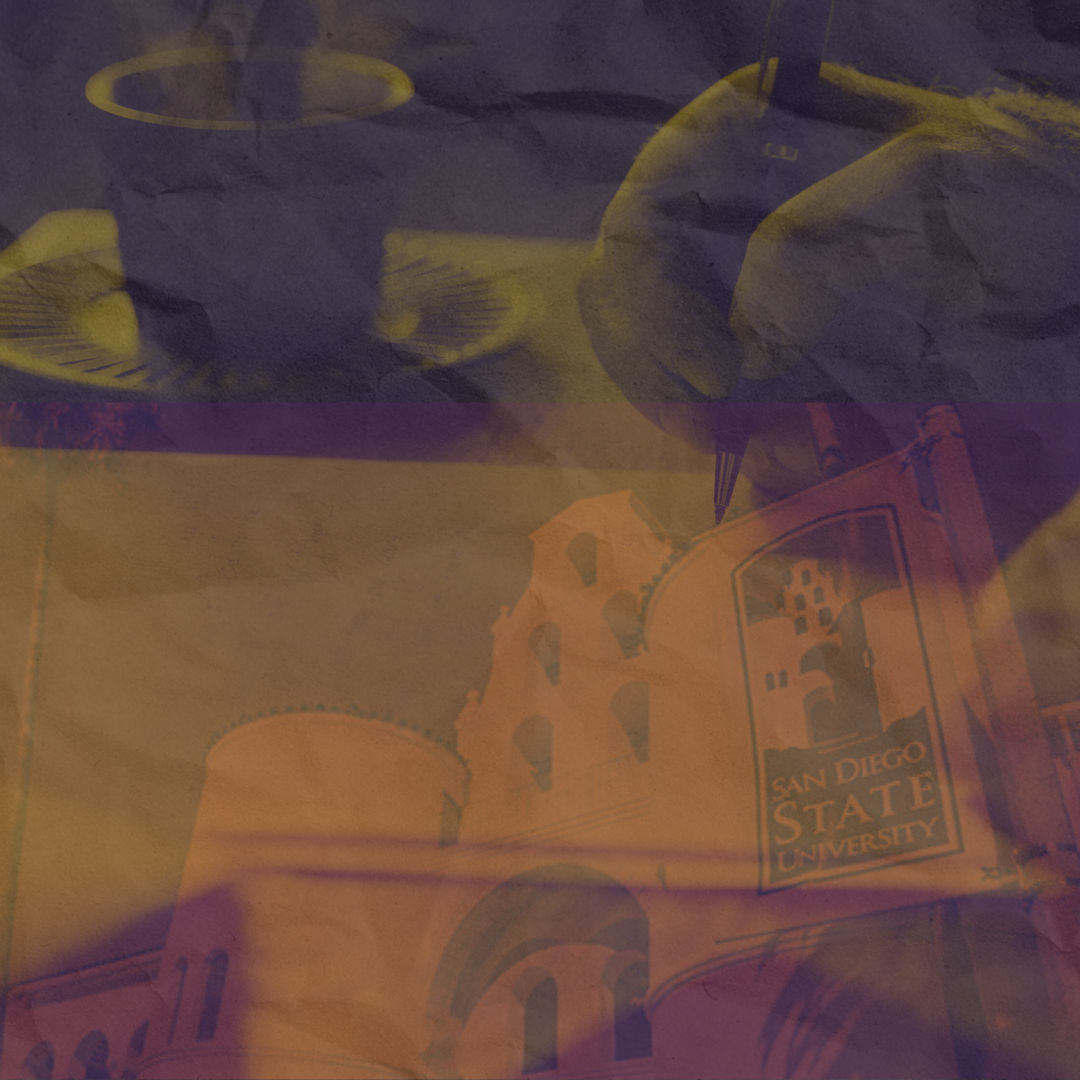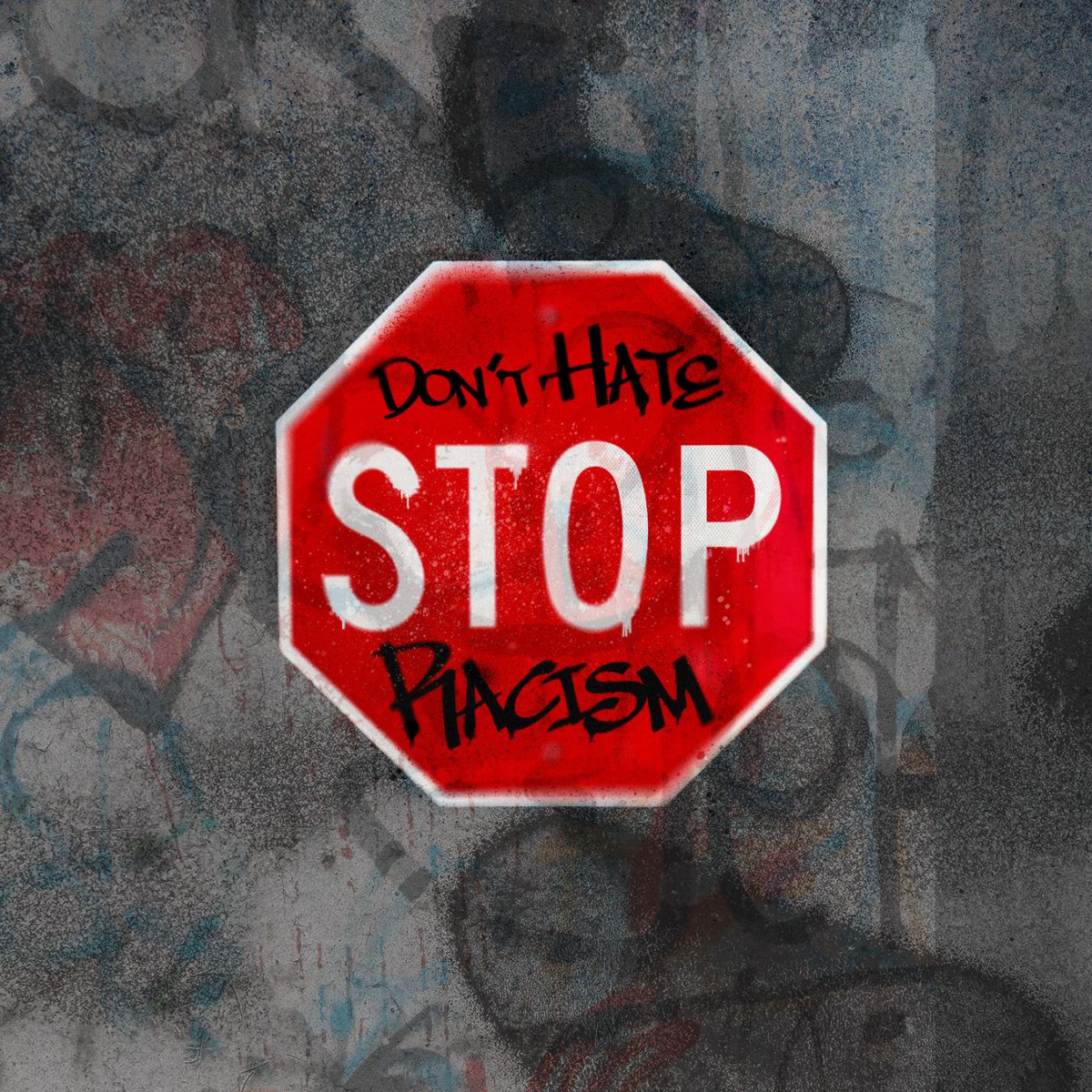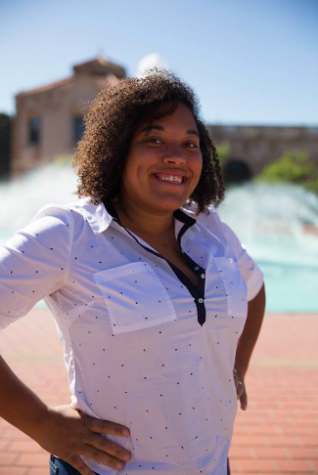Black students, allies and faculty members marched down Campanile Drive to Hepner Hall during a rally on April 18 where supporters demonstrated their intolerance for racism at San Diego State.
The protest was in response to a vandalism incident at the Black Resource Center over the weekend, which resulted in more than $400 in damages, according to university spokeswoman LaMonica Everett-Haynes.
During the rally, Associated Students President-elect and business senior Christian Onwuka read a list of demands from the students to the university.
The protestors want heightened security measures for the BRC, including an alarm system monitored by campus police and security cameras.
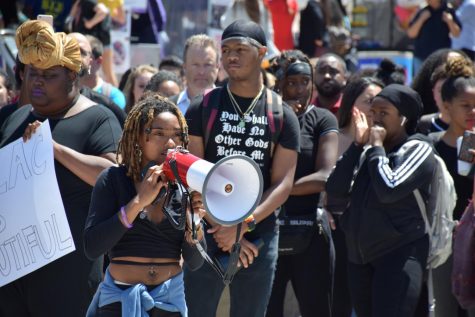
“We don’t have cameras at the Black Resource Center,” said Tamiel McKee Bey, cultural anthropology sophomore. “Can somebody tell me why every other center, building, frat and sorority house on this campus has cameras, but we don’t?”
Other demands included a sign in the front yard of the center, more police officers to be hired to work as safety escorts and funding to create a research symposium for faculty of color.
They also wanted protection for faculty and staff who speak out in support students of color, “culturally competent” counselors, training for faculty to advocate against racism and student involvement in the hiring process of faculty.
Onwuka said he was demanding the requests to be fulfilled by Aug. 30.
“How the hell can I represent my campus when my campus doesn’t represent me?” Onwuka asked. “How the hell can I speak for my campus when my campus doesn’t speak for me? How can I love my campus when my campus does not love me?”
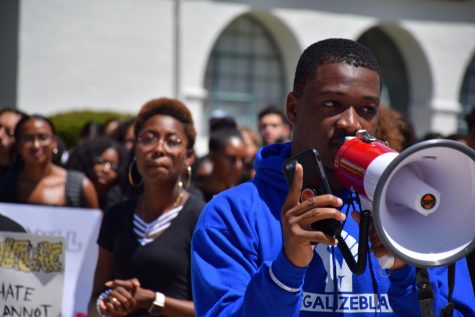
The protest was also in response to an incident in early March, where several passersby were recorded yelling a racial slur while driving by the Black Resource Center, McKee Bey said. Though there have been other incidents where racist remarks have been shouted at the building, she said it is the first time anything has been done about it. After the video was released, it went viral on social media.
“This isn’t the first time that this has happened, but SDSU is responding because this is the first time we got it on camera,” McKee Bey said.
Chief Diversity Officer J. Luke Wood said some of the demands listed during the April 18 protest have already been put in place and the university is currently working to address the students’ other concerns.
“What we do as an administration is to respond to what the student needs are,” Wood said. “What they’re doing is making sure that we’re aware of what those concerns are.
“Fortunately, many of the recommendations that they have are things that we have already either put into place or are putting into place.”
Wood wouldn’t further explain the new safety measures that have been put in place.
“We can’t go into detail about them except to say that we have absolutely enhanced security in and around the Black Resource Center,” Wood said.
During the rally, students and faculty gave speeches about their experiences with racism on campus.
Nursing junior Rayne Lopez said she and her friends were recently harassed by a faculty member and student in the parking lot. The faculty member threatened to call the police on them during the encounter.
“The incident that happened to me and my friends really got to me — and my dad telling me to stand down in that situation when my dad is one of the strongest black men that I know,” Lopez said.
Africana studies assistant professor Antwanisha Alameen-Shavers spoke out during the rally and called more faculty of all backgrounds, especially white faculty with tenure, to actively support students of color.
“I don’t know why they’re not here,” Alameen-Shavers said. “They don’t see it as important. They don’t see our students as their students.”
Alameen-Shavers cited the history of slavery, racism and Rudyard Kipling’s “The White Man’s Burden” — a poem justifying European American imperialism through religion — as some of the reasons why diversity issues occur at SDSU.
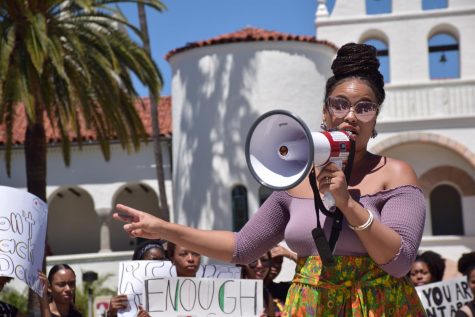
“White people don’t see us as their as their family,” Alameen-Shavers said. “They lack empathy for us and they have always done so because they created this paradigm whereby they are God. We are individuals that need to be saved.”
Several students who identify as allies spoke during the rally in support of the black community.
Alison Aiken, political science and women’s studies sophomore, said she tries to inspire other white students to speak out in support of students of color, but she isn’t always successful in her endeavors.
“When I try to start conversations about institutional racism and cultural issues regarding racism and how people of color are oppressed, oftentimes white people will not listen to me and won’t have the conversation,” Aiken said.
Mayra Pelcastre Rios, kinesiology senior, said she believes it is important for diverse communities on campus to support one another because there is strength in numbers.
“I feel as though it’s just a need for us to come together because one community cannot stand alone against all these (non-minority) communities,” Pelcastre Rios said. “It is seen in our history: if we all come together, we make a bigger impact, and if we come as a whole, we’re undefeated.”



